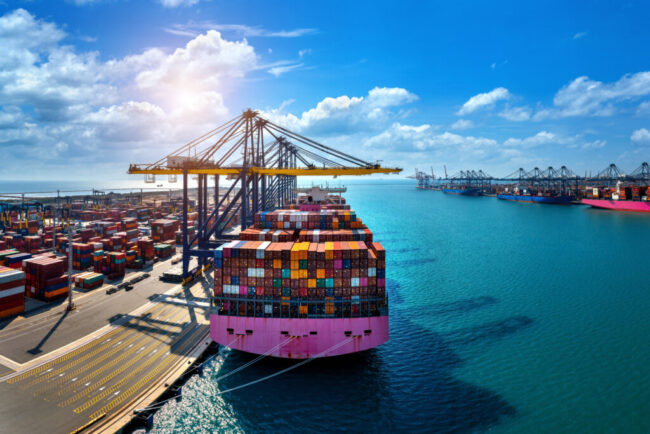The maritime industry is a significant contributor to global carbon emissions, with the International Maritime Organization (IMO) reporting that over 1 billion tonnes of carbon dioxide were emitted by shipping activities in 2018 alone. A considerable portion of these emissions is generated by seaport operations, including ship berthing, cargo handling, and internal transportation. Governments, NGOs, and environmental groups worldwide are calling for immediate action to reduce the pollution caused by these activities.
One of the most effective strategies for reducing emissions at ports is through electrification. This approach involves enabling ships to connect to shore-side electric power instead of relying on their diesel-powered auxiliary generators for essential functions such as lighting, cargo handling, heating, and cooling. Additionally, it proposes replacing diesel-powered equipment, such as cranes, forklifts, and trucks, with battery-powered alternatives.
To explore this innovative solution further, IEEE Spectrum interviewed John Prousalidis, a prominent advocate for seaport electrification. Prousalidis, a professor of marine electrical engineering at the National Technical University of Athens, has been instrumental in developing standards for seaport electrification through his work with the IEEE, the International Electrical Commission (IEC), and the International Organization for Standardization (ISO). As the vice-chair of the IEEE Marine Power Systems Coordinating Committee, Prousalidis has significantly influenced the advancement of these initiatives. In 2023, he co-authored a pivotal paper titled “Holistic Energy Transformation of Ports: The Proteus Plan,” published in IEEE Electrification Magazine. This paper outlines a comprehensive vision for the future of port operations, and its key points have been incorporated into the European Union’s Smart and Sustainable Ports policy, approved by the IEEE Global Policy Committee in July 2024.

Understanding “Cold Ironing”
One of the critical components of seaport electrification is a process known as “cold ironing.” This technique involves shutting down a ship’s propulsion and auxiliary engines while in port and connecting the vessel to shore-side electricity to power onboard systems like air conditioning, cargo handling, kitchens, and lighting. The use of electricity from the grid, particularly from renewable sources, significantly reduces emissions compared to burning diesel fuel. However, the technical challenges of cold ironing include aligning the ship’s voltage and frequency with the local grid, which can vary globally, and addressing grounding issues to prevent short circuits.
To facilitate cold ironing, the IEEE, IEC, and ISO have jointly developed the 80005 standard, a series of three standards for high-voltage and low-voltage connections. This standard is becoming widely adopted, with many governments mandating its use in ports to supply power to ships.
Global Adoption and Impact
The European Union has set a deadline of January 1, 2030, for full compliance with these standards. In the United States, California was an early adopter of similar measures in 2010. This push for electrification is now gaining momentum worldwide, with support from the IMO.
Another promising aspect of port electrification is the use of regenerative braking on cranes. When cranes lower shipping containers, they can convert the kinetic energy into electrical energy instead of wasting it as heat. This energy can be fed back into the crane’s battery, potentially saving up to 50 percent in energy costs, although more conservative estimates suggest savings of around 20 percent.
Cost and Carbon Reduction Potential
The cost of implementing cold ironing at a major port like the Port of Los Angeles, the largest in the United States, is estimated at approximately $1.7 million per megawatt, which includes grid upgrades, infrastructure, and equipment. A rough estimate puts the total cost at around $300 million. Electrification efforts at this port are already underway, with over 60 electrical connection points for ships at berths.
If the world’s 10 largest and busiest ports were to fully electrify using renewable energy, the European Union’s policy could lead to a 100-percent reduction in ship emissions within port areas. According to the IMO’s approach, which takes into account the energy mix of each country, this could result in a 60-percent reduction in emissions. This would not only lower CO2 emissions but also reduce nitrogen oxides, sulfur oxides, and particulate matter, thereby mitigating shipping’s contribution to global warming and improving public health in nearby communities.
The Road Ahead
The European Union aims to achieve full port electrification by January 1, 2030. However, with 600 to 700 ports in Europe alone, and the need for extensive grid upgrades, delays are possible. Despite these challenges, the focus should remain on meeting the 2030 deadline. As John Prousalidis notes, in the face of a critical situation like global warming, it is essential to concentrate on the time available to solve the problem rather than worry about what happens if time runs out. Humanity must act decisively to avoid the severe consequences of failing to implement “save the planet” projects like seaport electrification.
COMMENTS